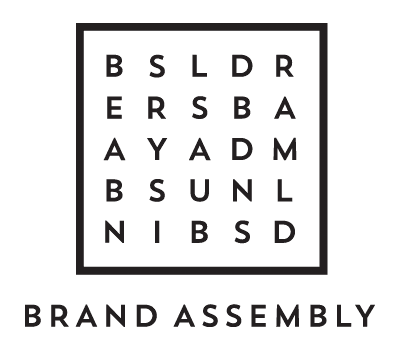Discover How Ginny Slim is Embracing Slow Fashion Through Her Brand SUGARHIGH LOVESTONED
Our designer community has proven time and time again that pushing the boundaries of industry expectations can inspire limitless creativity. In this case, we're referring to the sartorial ingenuity of SUGARHIGH LOVESTONED which is led by Ginny Slim. Over the years, the Minnesota-born and now Maui-based designer has created an evocative lifestyle brand, that at its core, is rooted in simplicity. And even with an arsenal of classic silhouettes (which primarily includes t-shirts, pants, and jumpsuits), Ginny has brought her pieces to life with unapologetic fervor which is evidenced in every aspect of the brand — from its statement-making apparel to kitschy visual branding.
But for Ginny, the brand's wild success and unfaltering point of view come from a deeper place of determination — and honesty. And unsurprisingly to us, these very traits set the tone for a candid conversation about what it takes to build a conscious brand in this day and age, along with what it's like to do it outside of the usual industry "hub." Enjoy our interview with Ginny who graciously gave us a peek inside SUGARHIGH LOVESTONED's eclectic design studio in Maui, and spoke with us about her journey, the importance of slow fashion, and her tips for design peers.
HI GINNY! THANKS FOR HAVING US. PLEASE INTRODUCE YOURSELF.
Hi, my name is Ginny Slim. I moved out to Maui by myself right after college with $700 and a one-way ticket. I grew up in rural Minnesota and had never even heard of an avocado before. Needless to say, it was quite the move. Professionally speaking, I've been everything from a dishwasher to the CEO of SUGARHIGH LOVESTONED.
GIVE US AN OVERVIEW OF THE INCEPTION OF SUGARHIGH LOVESTONED.
I was doing freelance graphics for a client while working part-time at both a surf shop and a bikini shop. My client was over from Oahu and stopped into the bikini shop — she pulled me into the dressing room and literally said, "What are you doing with your life? You can do your own thing. We will help you out with your first production run." And there you have it. And I still work with them today.
DO YOU REMEMBER THE FIRST PIECE YOU DESIGNED? HOW MUCH HAS THE BRAND EVOLVED SINCE INITIALLY LAUNCHING?
Yep, one of them was a hot pink tee with gold foil print. I showed my first line to the head buyer at Kitson, and she was like, "We don't buy pink. So now you only have two other tees to offer." She bought them, but it's been a pretty balls-out learning experience since the get-go.
TELL US MORE ABOUT WHAT'S IT BEEN LIKE TO MAINTAIN THE BRAND IN HAWAII.
It's not easy. The weather can affect driving, shipping, WiFi, and electricity. So we've got to be prepared for those strong rains. Also, FedEx is our best friend right now!
YOU EXPRESSLY STATE THAT THE BRAND IS NOT FAST FASHION. HOW WOULD YOU DEFINE SLOW FASHION AND WHY IS IT IMPORTANT TODAY?
Slow fashion means we aren't Forever 21, H&M, or any sort of major overseas operation. We don't scour small designers and trade shows looking to rip off other people's creative work. We are not and will never be mass-produced. We know our makers. We chat, meet for drinks and talk about life with them. They are our partners, not just a place we send our purchase orders too. We are very curated in every part of our design process all the way through our sampling to our production. We don't believe in over designing or having a huge line full of fillers. We feel it's a waste of time, energy, and resources. We produce many elements of the brand in Los Angeles and Portland, so our costs are higher, but as a result, so is the quality of fits, fabrics, inks, and washes.
WHAT STEPS DID YOU HAVE TO TAKE TO GET THE BRAND TO A PLACE WHERE YOU COULD IMPLEMENT “SLOWER” PRACTICES ACROSS THE BOARD?
We've always produced and designed with this mindset. As far as why we think it's important, that's a loaded question — I think we still have a long way to go before it's something that is truly valued in our current consumer market place.
Social channels have created this kind of anonymous platform for quick judgments and negativity without repercussion. I miss the old days of if you had something negative to say you actually had to grow the balls to say it in person. We definitely take risks on our social channels. We also pour a pretty strong shot of sense-of-humor. This is not always so well received, but I think that makes us different. In a sea of everything, and girls in maxi-dresses with straw hats, I hope that we are paving the way for something that's kind, light-hearted and still really meaningful — just not so serious.
WHAT TIPS WOULD YOU GIVE TO OTHER EMERGING DESIGNERS LOOKING TO BUILD THEIR BUSINESSES IN PLACES THAT MAY NOT BE CONSIDERED INDUSTRY HUBS?
Stay current — You'll have to work twice as hard.
Have faith — I mean, look at Instagram, dating apps and other social resources, they are all working "remote" if you think about it.
Well, you're probably not going to like this one, but rethink where you live — Be honest with yourself. Do I want to stay outside of where it's all much easier? Or do I want to consider relocating to build a tighter and larger network?
WHAT CHANGES DO YOU HOPE TO CONTRIBUTE TO THE INDUSTRY LANDSCAPE OVERALL?
I'm not sure if this answers the question but I'd say our motto of the moment is: "Just because you're offended, doesn't make you right."
PHOTOS BY MARISSA JOAN HO FOR BRAND ASSEMBLY










